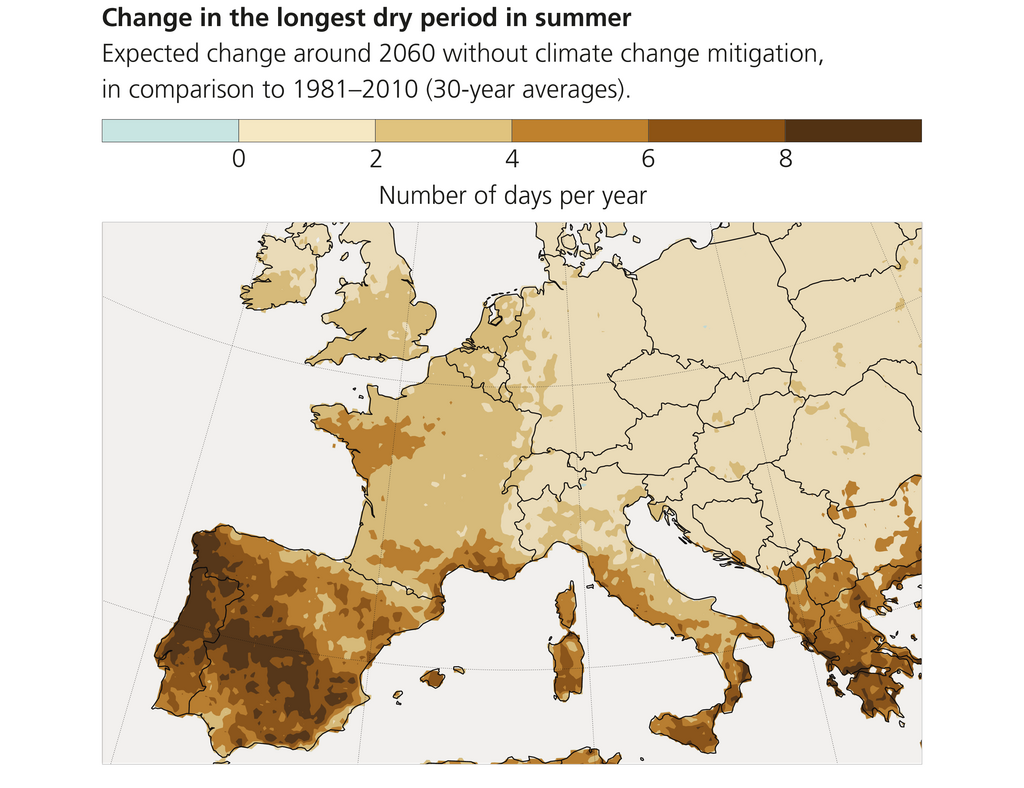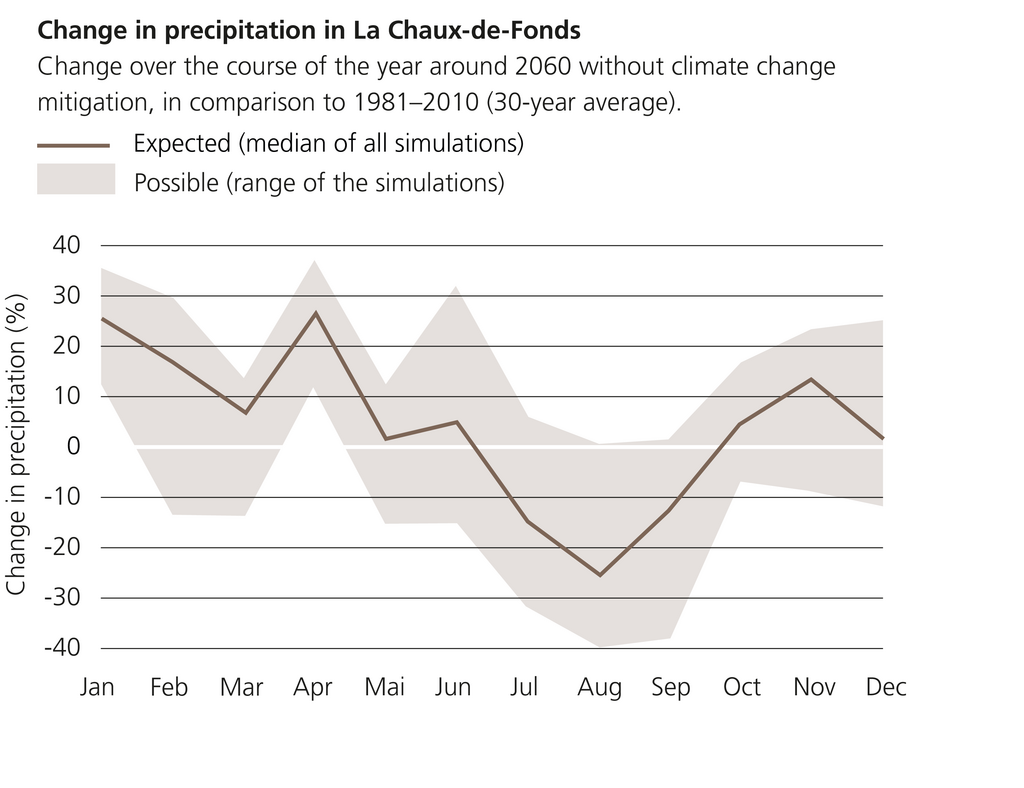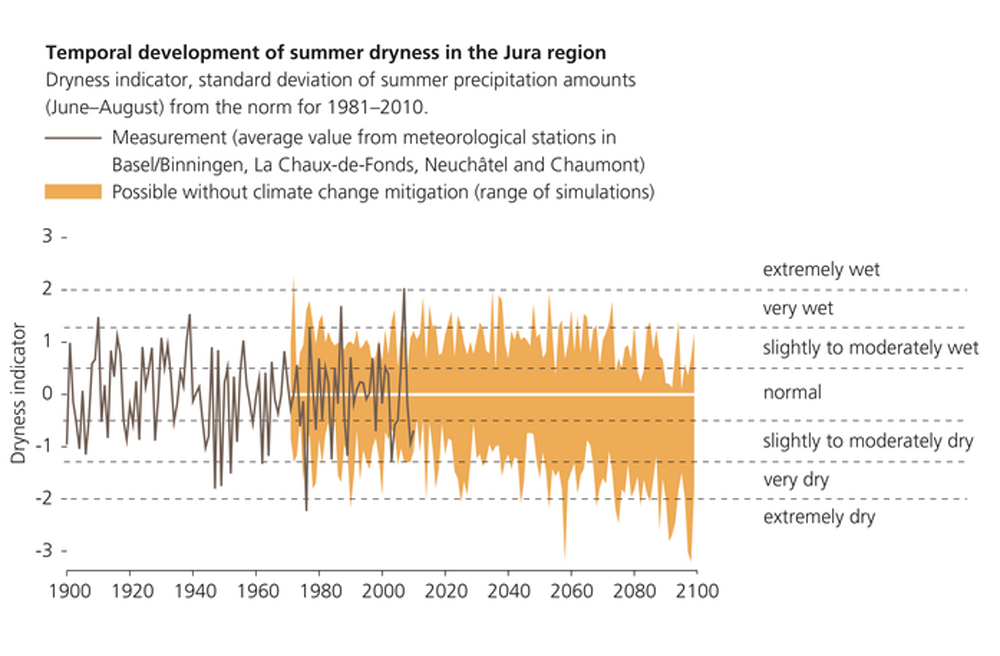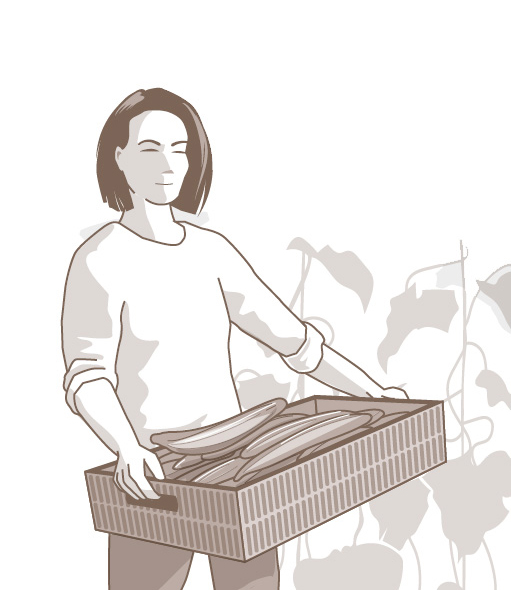In the long term, average amounts of precipitation in the summer months will shrink, and evaporation will increase. The ground will become drier, there will be fewer rainy days and the longest precipitation-free period will last longer.
The content of this page is based on the Swiss climate scenarios CH2018. In the meantime, the new Swiss climate scenarios have been published as part of the Climate CH2025 project. They expand on the previous results with longer measurement series and information from new, high-resolution climate models. The qualitative statements remain unchanged from the CH2018 climate scenarios, but the quantitative estimates have changed. It is recommended that the results of Climate CH2025 be used.
|
Summer precipitation | Longest dry period in summer | Summer temperature
|
|---|---|---|---|
| Possible around mid-century | -25 % to +10 % |
+0 to +9 days |
+2.5 °C to +4.5 °C |
| Possible by the end of the century | -40 % to 0 % |
+1 to +9 days |
+4 °C to +7 °C |
The average near-surface air temperature in Switzerland through June, July and August is about 4.5 °C warmer than today. At the same time, there is up to a quarter less rainfall, and the longest dry period without precipitation in summer lasts about 20 days instead of 11.
A noticeable reduction in precipitation during the summer months is expected in the future. Although we are still experiencing a similar amount of rainfall on an average rainy day in summer as in the past, there are now more days without rain. The longest dry period in summer may last about a week longer on average by the middle of the century.
In general, areas in the west and the south will be more affected by a potential decrease in rainfall than eastern regions. Not only will there be less rain, but because of the high temperatures, more moisture will evaporate than it does at present. The ground will thus become drier, even if the amount of rainfall does not change.
The trend towards dryness will further increase with continued climate change. By the end of the century, dryness to an extent that has occurred only once or twice every ten years in the past could be occurring every two years.
Average temperatures can be simulated quite reliably with climate models. Precipitation is more difficult to predict, as it is subject to significant natural variations in terms of amount and distribution. This is due to the wide range of mechanisms that determine the atmospheric water balance. Despite such uncertainty, the climate simulations clearly indicate a long-term trend of reduced precipitation in summer.
The summers of 2003 and 2018 provide an idea of the potential effects of hot, dry summers. Apart from agriculture, the energy production and water management sectors are also affected by increasing dryness in summer.
The key messages can also be found in the CH2018 brochure, which is available in printed form or as an electronic download.
Last modification 10.10.2025









